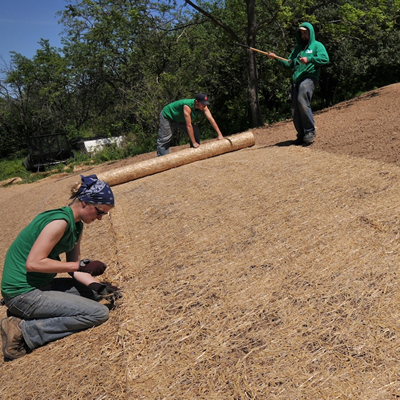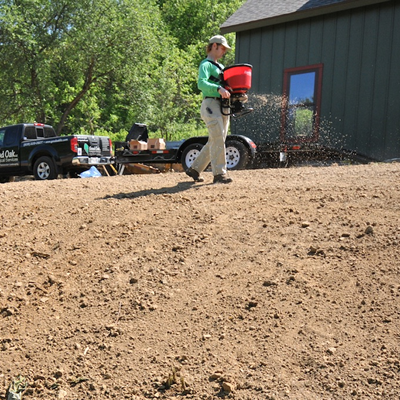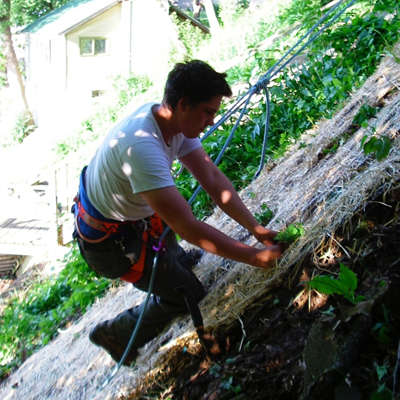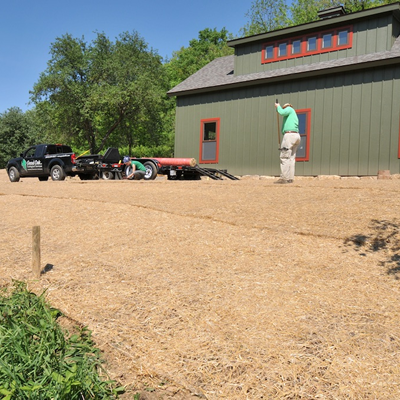Slope Erosion Control
There are many causes of eroded slopes in our landscape from new construction, to overgrazing, storm water run-off, or even dense invasive brush cover. Erosion from slopes is an environmental hazard because it pollutes our waterways, but it can also be a safety hazard as it threatens our roadways and home sites.
Traditionally, concrete, stone or brick retaining walls have been used as the solution. However, the deep roots of native prairie and savanna plants can provide the stability needed to hold slopes in place at considerably less installation and maintenance costs than hardscaping solutions.


Setting The Stage
It may seem strange, but the first step to stabilizing a slope is often cutting down trees and shrubs. The coarse roots of woody plants are not as good at holding soil as the fine roots of grasses and wildflowers. The dense shade on many sites is the result of weedy trees and especially invasive shrub species such as buckthorn and honeysuckle. So this brush must be removed to allow light to the ground where it can foster native flowers and grasses.
As Plants Grow, the Land Heals
The native plants we install are long-lived perennials and they can take several years to establish so the next step is to stabilize the site in the short term. Erosion control matting is used to blanket the ground and prevent damage from both rainfall impact and over-land flow. The steepness of the slope and soil type will determine what kind of erosion matting we use. Typically our matting is composed of straw, coconut fiber, or some combination of the two. On steeper slopes, or where rutting is occurring, we will often use coconut-fiber biologs to act as check-dams where water flow can be slowed and silt can be deposited.
A diverse native seed mix is spread on the ground before the erosion matting is installed. Typically we mix these seeds with a hardy annual cover crop like oats that can begin the work of binding up the soil and provide some cover for the perennial seedlings. Installing plant plugs, in addition to the seed, provides more 'instant' results, accelerating the establishment process and often providing flowers in the first year.
These slope plantings often take 2-4 years to become well established. During this period, we recommend regular maintenance to control weeds and manage any small erosion problems that might come up before they become big problems again.

